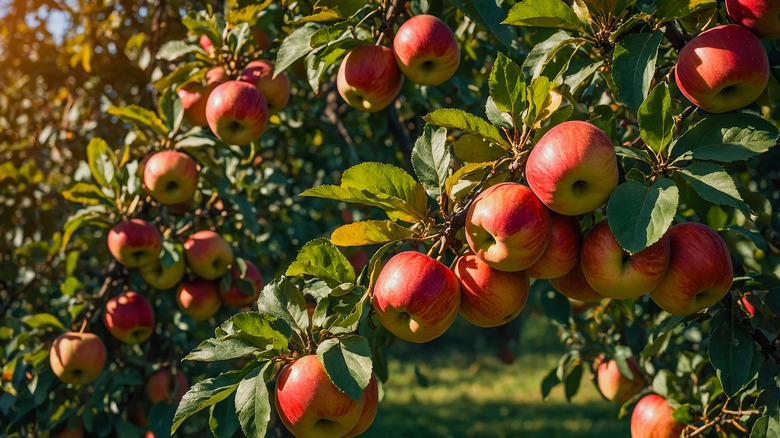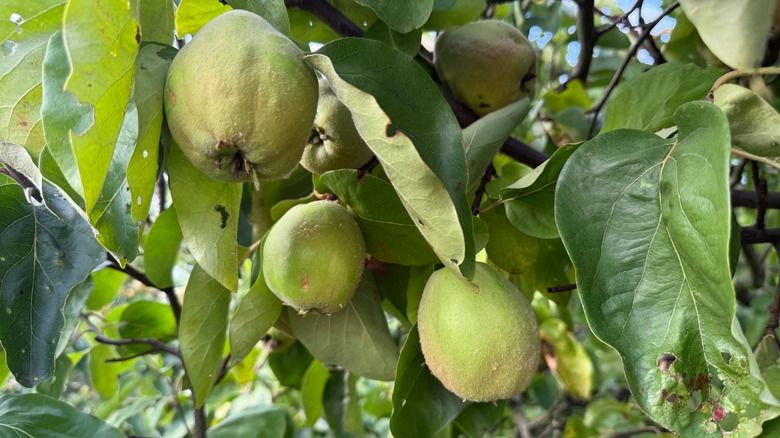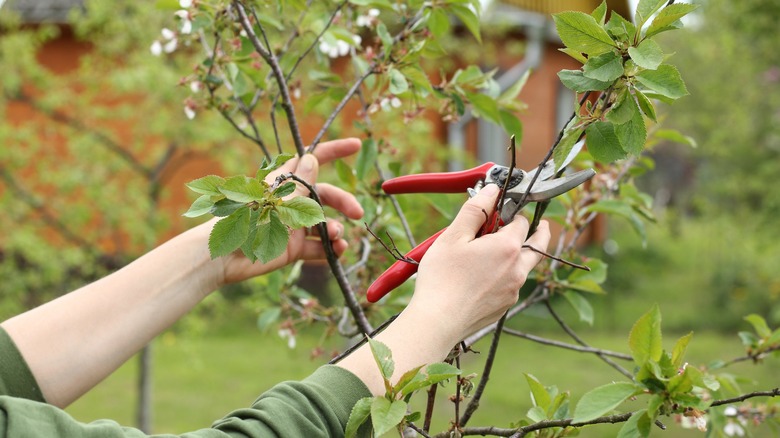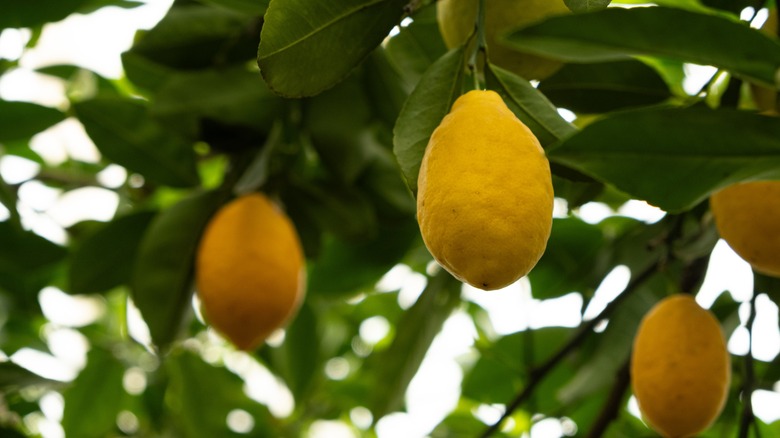10 Fruit Tree Varieties To Prune In Winter For A More Delicious Harvest Next Season
Fruit trees are some of the best plants that you can grow in your yard. They're beautiful, offer some much-needed shade in summer, and they feed you. Even beginning gardeners can grow fruit trees in their yards with some fun and low-maintenance varieties. No matter how easy-going, fruit trees do have some care needs. For example, a lot of them require you to prune and trim them at least once a year, whether you're removing healthy branches or just clearing out dead ones. Some fruit trees prefer to be pruned in winter, while they're dormant (also called dry pruning), like apples and pears.
While apples and pears are the most well-known fruit trees in need of winter trimming, they're not the only ones. Some more unique varieties, like quinces and persimmons, also like a little trim in the winter. Other varieties, like cherry trees, fig trees, and pomegranate trees, can benefit from a small trim during winter.
Each tree has its own needs for pruning, so it's best that you look up exactly how to prune your trees without killing them. As a rule of thumb, though, it's best to trim trees when it's dry and mild out to avoid water getting into the cuts and spreading diseases (toward the end of winter). The priority is to remove dead branches, but it's also an opportunity to remove low-hanging ones and help make some room for more sunlight. In some cases, pruning healthy branches can also encourage bigger fruits next season. Cut branches above nodes, which are the spots where branches connect to offshoots.
Apple trees
If there is one tree that's synonymous with winter pruning, it's the apple tree. After a bountiful fall harvest, an apple tree begins to look bare toward the end of October. Then, the tree will lose its leaves and go to sleep for the winter. This is exactly when apple trees need to be pruned, during their dormant season. You can do this anytime between November and March, before new buds start to grow again. Using sharp shears, remove dead branches. You'll also want to cut off some of the tree's healthy branches, so make sure to follow a guide on how to prune apple trees.
European pear trees
Another must for winter pruning is the European pear tree. Pear trees produce fruit from the end of summer until the beginning of winter. Once the harvest is over, the tree will go to sleep for the winter. Similarily to apple tree pruning, this will require you to remove dead branches, but also some healthy ones to help the tree be more balanced, vigorous, and healthy next harvest season. For example, you'll need to remove strong branches that are growing toward the tree's trunk or the ground. Shortening the ends of the branches will also help produce more fruit.
Quinces
Quinces are not incredibly popular in the United States because the ones found here are so hard that they need to be cooked before being eaten. Nonetheless, some adventurous gardeners and cooks might try their hand with this interesting fruit, known for its unique and tart flavors (they're especially great in jams!). If that's you, then add pruning your quince tree to your winter gardening to-do list. These don't require extensive pruning, but their dormant period is a good time to clear out dead branches, unruly ones growing downward or toward the trunk, and even out unbalanced growths.
Pomegranate trees
Pomegranate trees can be pruned in the winter, though it's best to do it later in the season. In February or March, remove dead and messy branches from the tree. Once spring rolls around, this will help the tree spend its precious energy on healthy branches instead of sick and dead ones. With these fruit trees, no need to remove healthy branches, so try to be conservative. It's best to cut too little than too much with these guys.
Persimmon trees
In some European countries, like Switzerland, persimmons are considered a holiday fruit. In the United States, these interesting fruits are gaining in popularity, used in smoothies, salads, and cakes. American persimmons are native to parts of the United States, which makes them a great choice for gardeners. If you've got a persimmon tree at home, the end of winter is the right time to prune some branches. Here again, focus on removing diseased and dead branches to give the tree a fresh start next season.
Fig trees
Fig trees are often pruned in the summer. However, winter is a good time to give them a small and quick cut, too. While the tree is dormant, toward the end of winter, remove its diseased and dead branches. With fig trees, you'll notice a lot of sap bleeding from the branches. It's normal, and it's part of the reason why you should avoid pruning the tree during the spring (when it produces the most sap).
Cherry trees
We typically think of pruning cherry trees in the summer, right after cherry season ends. However, doing it in the winter actually has some benefits. If you prune a cherry tree when it's dormant, toward the very end of winter, it will be less likely to catch diseases. Make sure to do this right before spring, in February or March, when the tree is still asleep, and only in dry winter conditions. If you're experiencing a wet winter, wait for summer.
Meyer lemon trees
Meyer lemon trees don't require excessive pruning, but they'll appreciate you clearing out some of the branches to help them breathe. If you prune the branches where clusters of Meyer lemons grow, you might even be able to yield larger fruits from that branch next harvest season. If you decide to give your Meyer lemon tree a snip, do it in the late winter, and hold off during the first few years of the tree's life so it can establish itself first.
Crab apple trees
Crab apple trees also benefit from a winter trim. While these are known as the wild cousins of regular apple trees, it doesn't mean you should let them run wild and free. To make sure crab apple trees thrive and stay healthy, prune them at the very end of winter, when the tree is asleep and before new growth resumes in the spring. Make sure not to remove more than a quarter of the tree's canopy at once, and thin it out over several seasons instead.
Asian pear trees
Asian pears are larger and rounder than their cousins, the European pears. They're very popular in the United States because of their juicy texture and sweeter taste. Just like their cousins, these fruit trees need to be pruned in the winter, specifically toward the end of the season when the tree is still dormant and before spring rolls around. Thinning out an Asian pear tree will guarantee you a better harvest next season.










